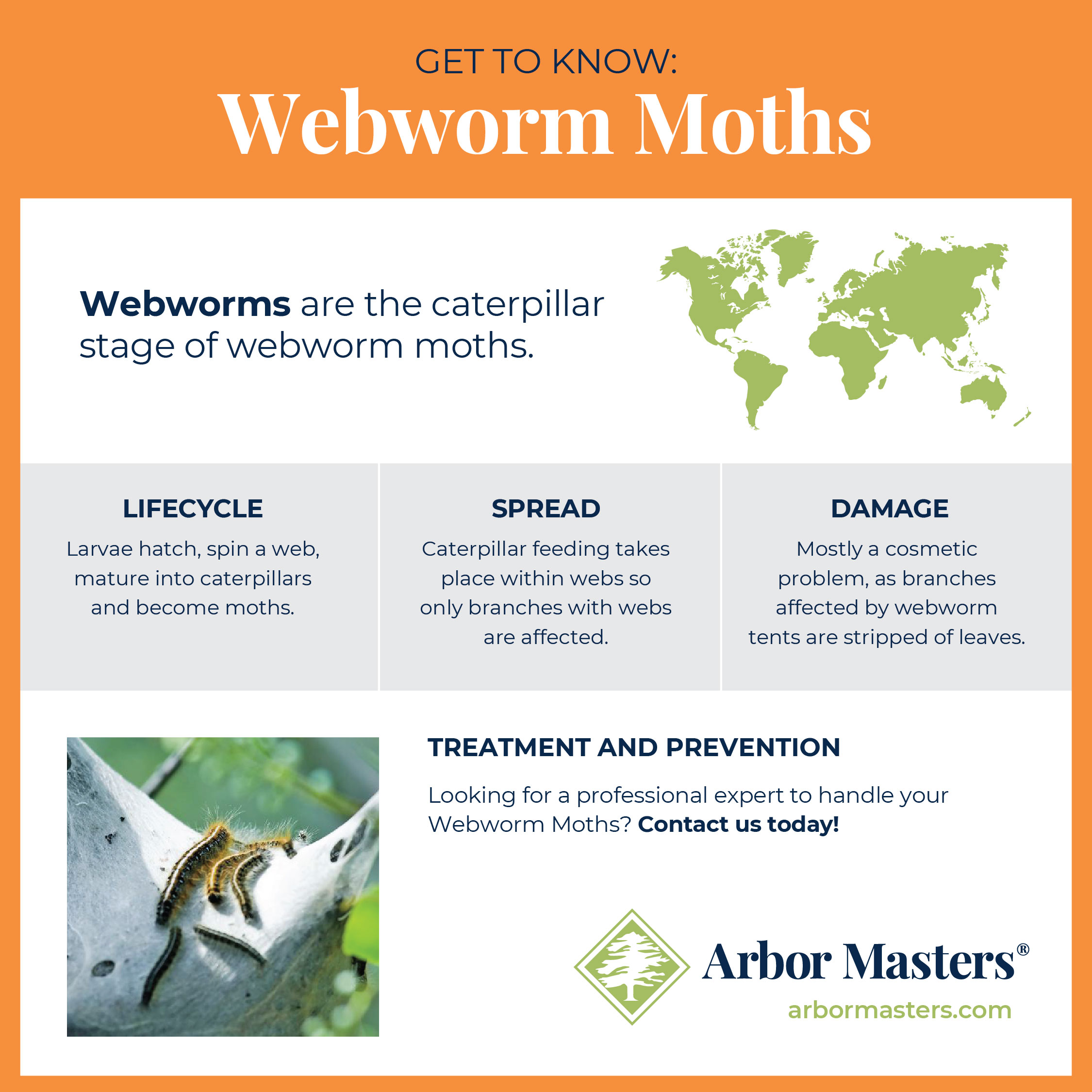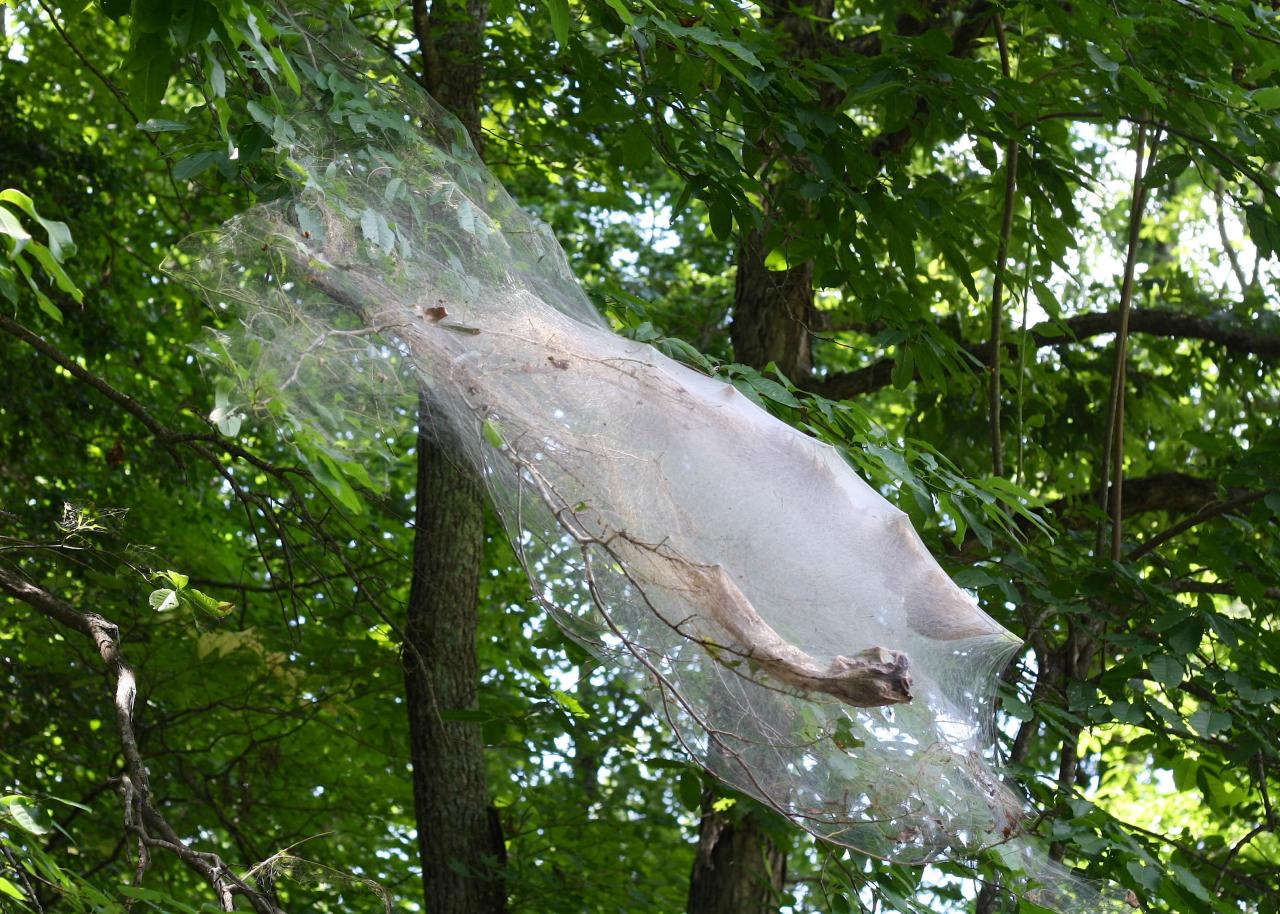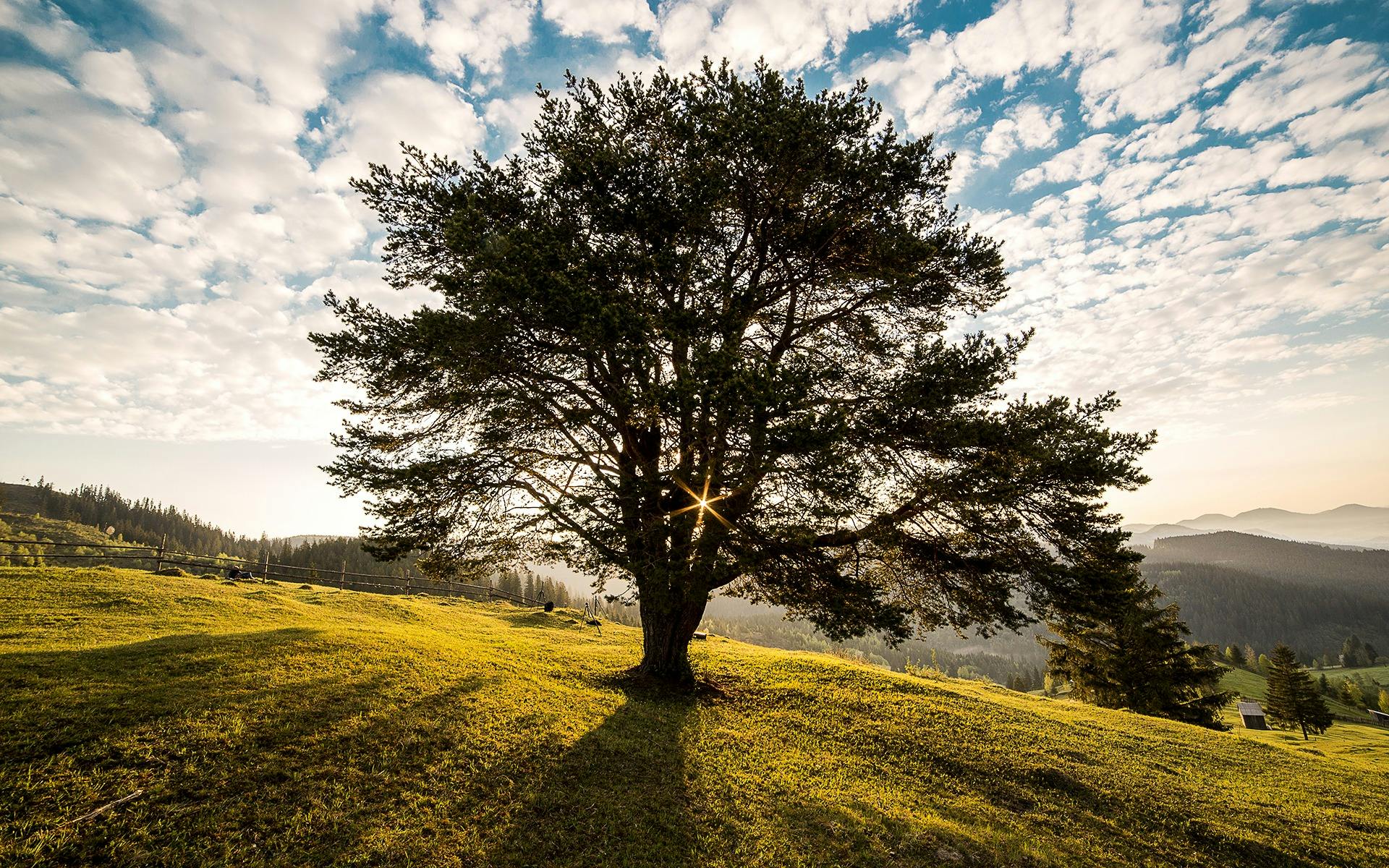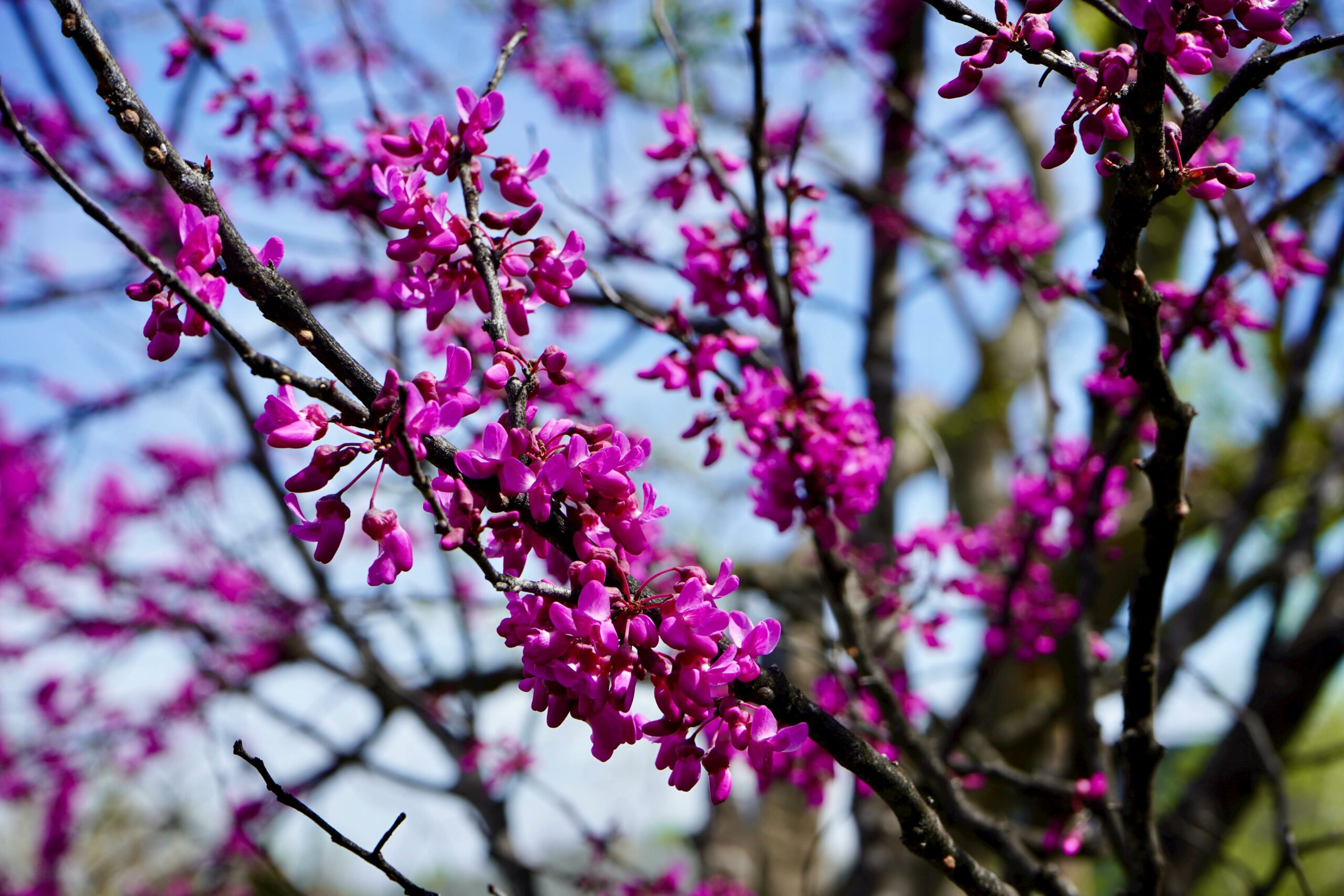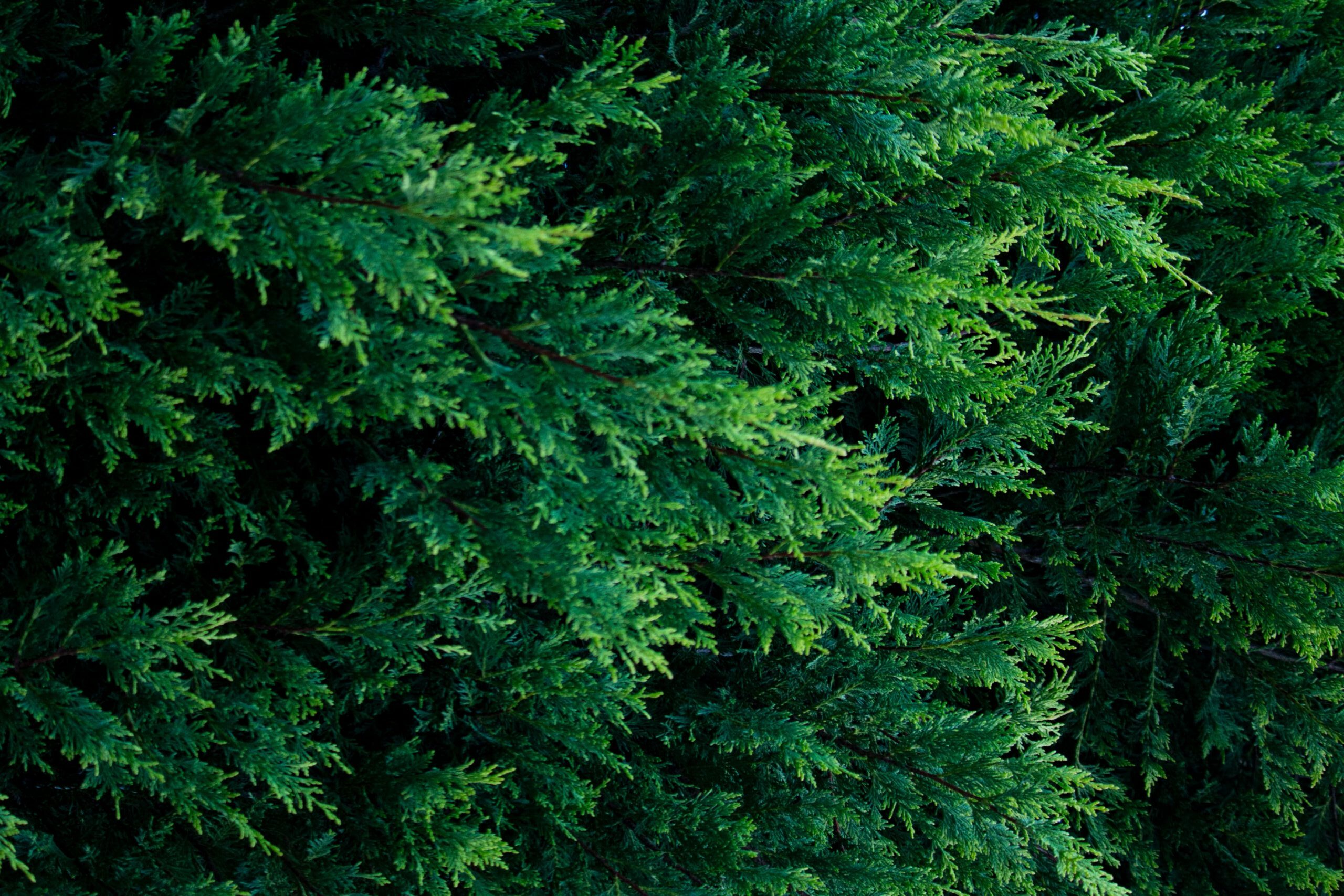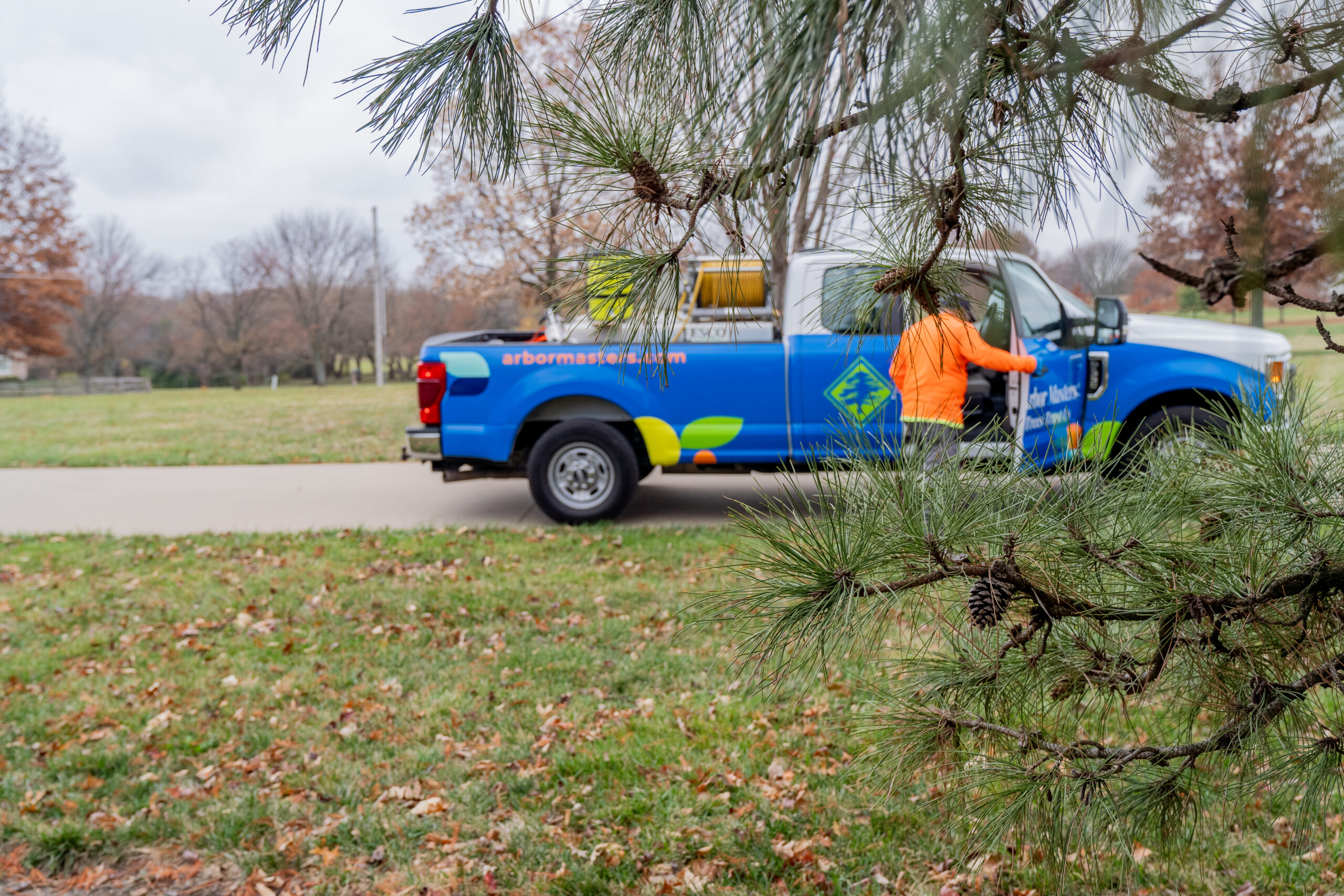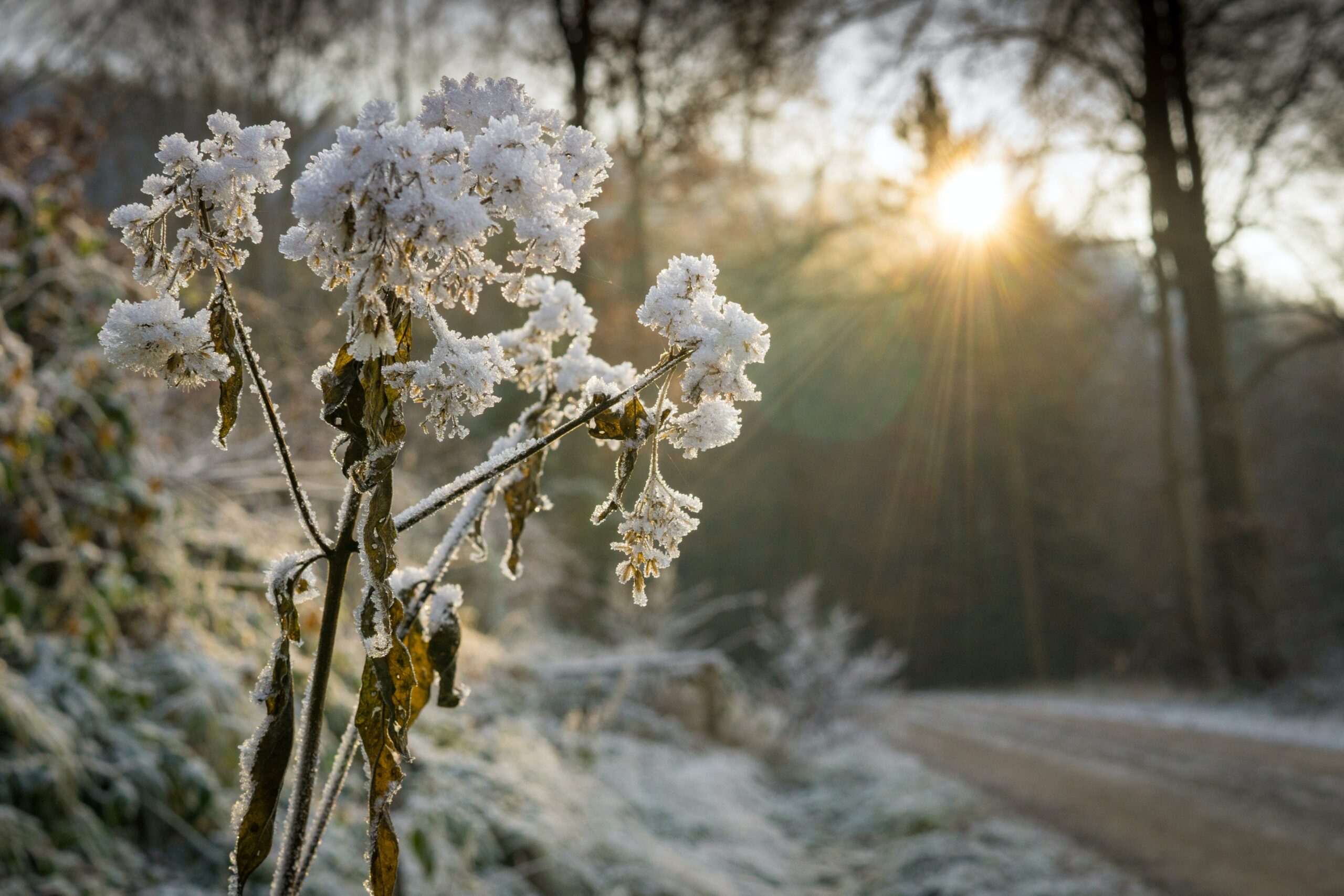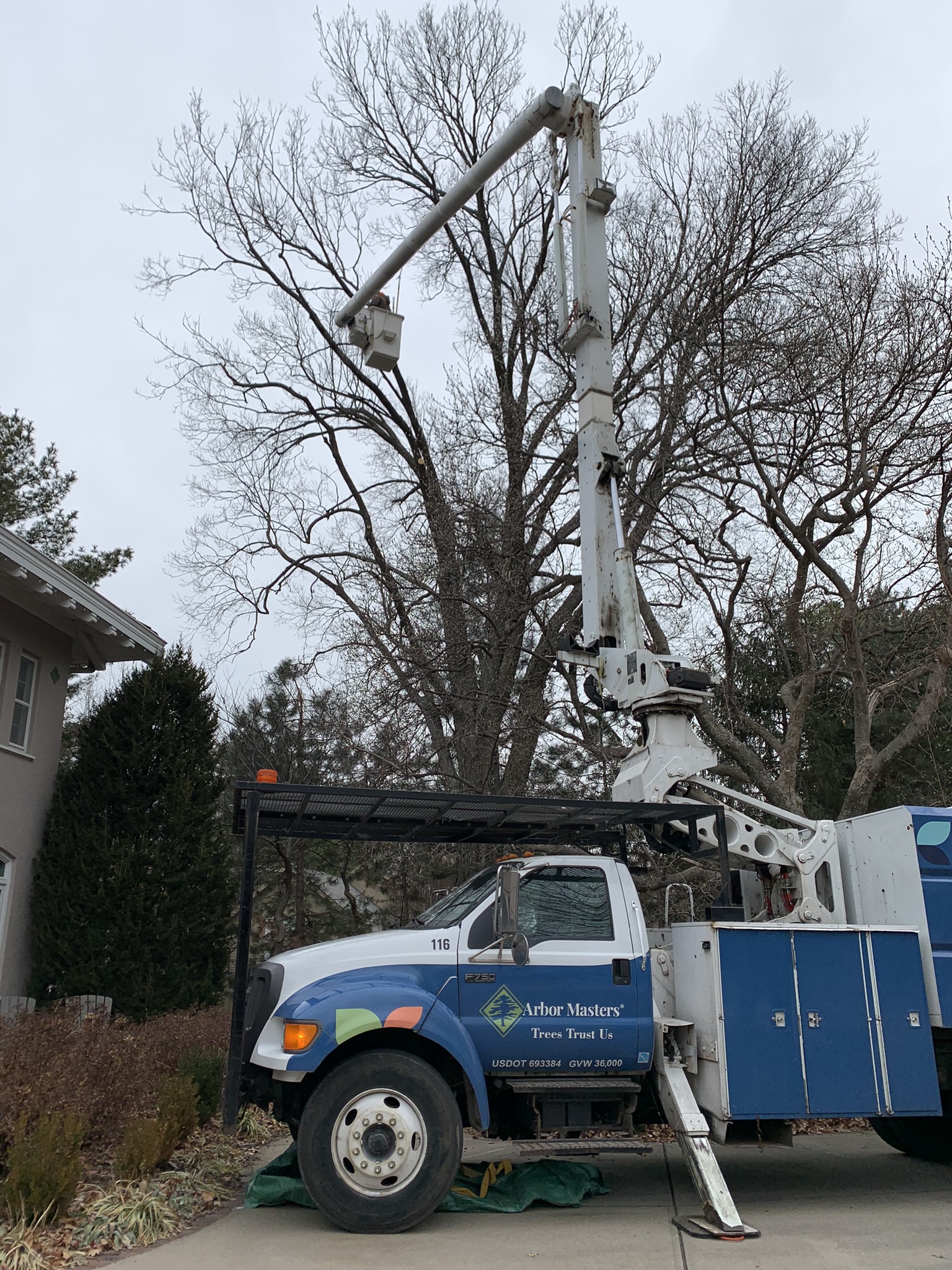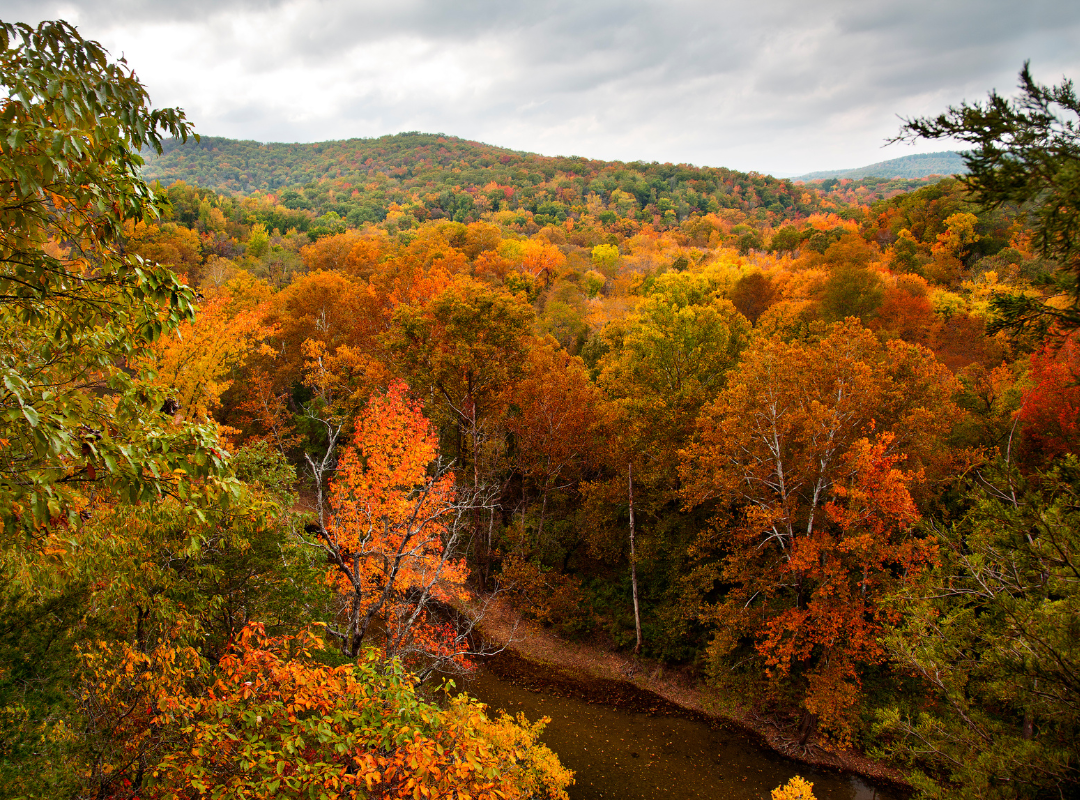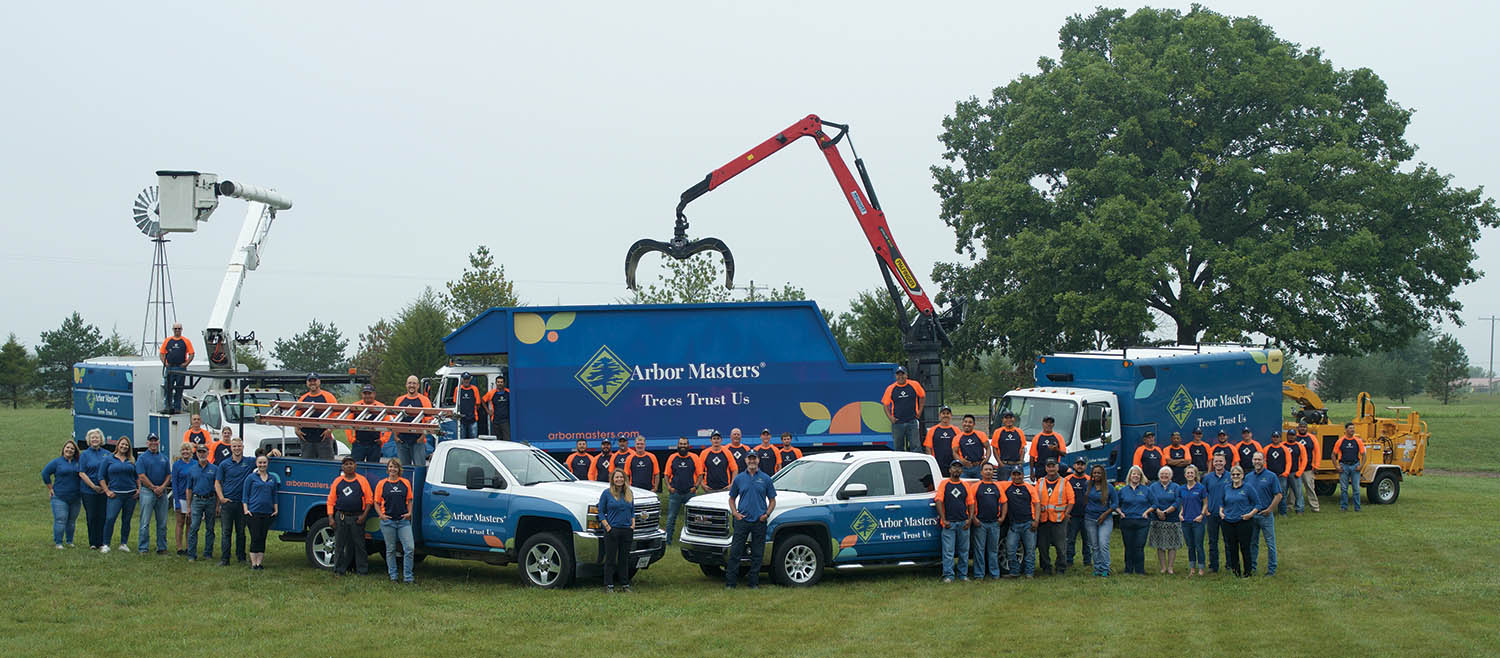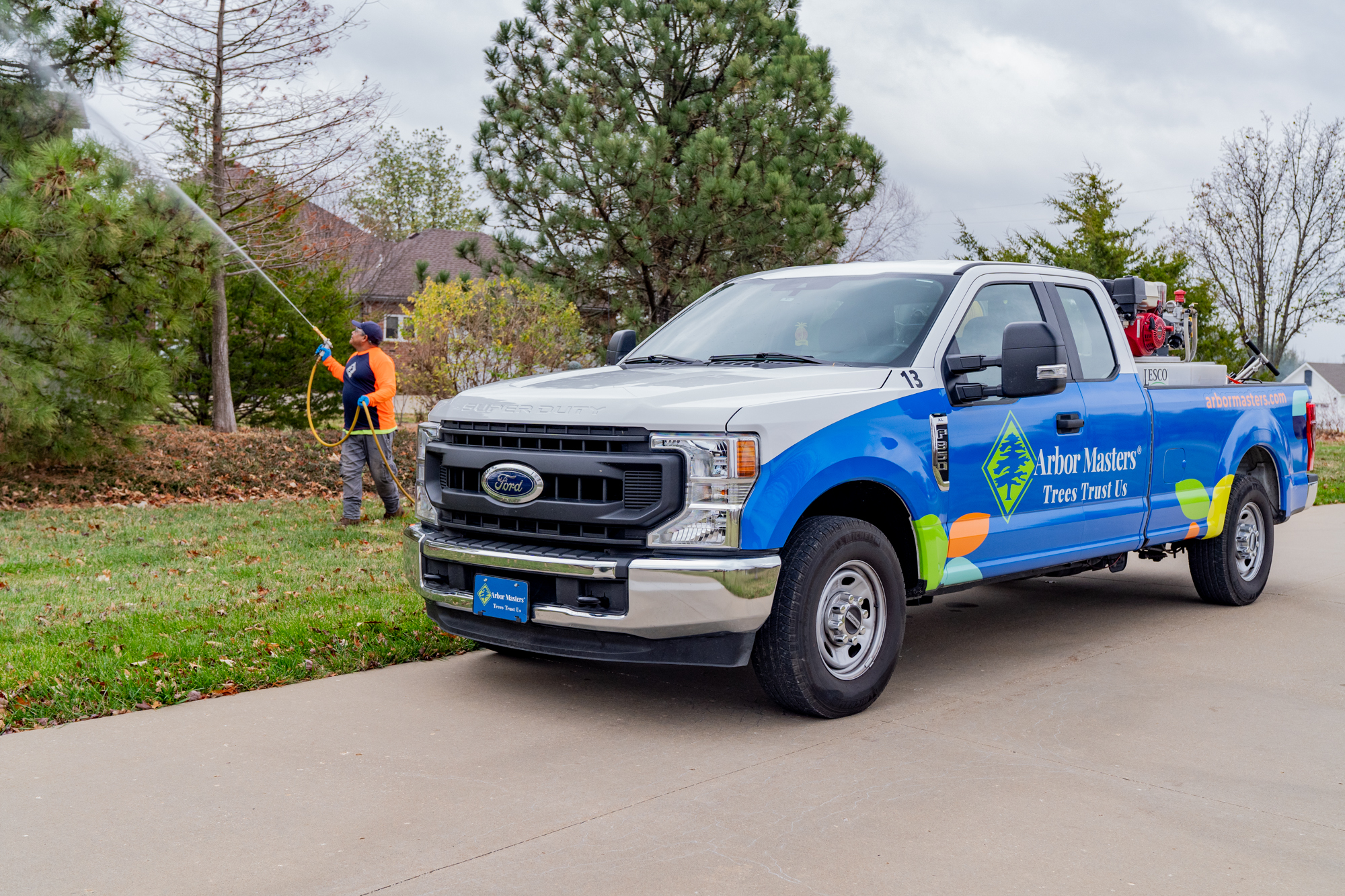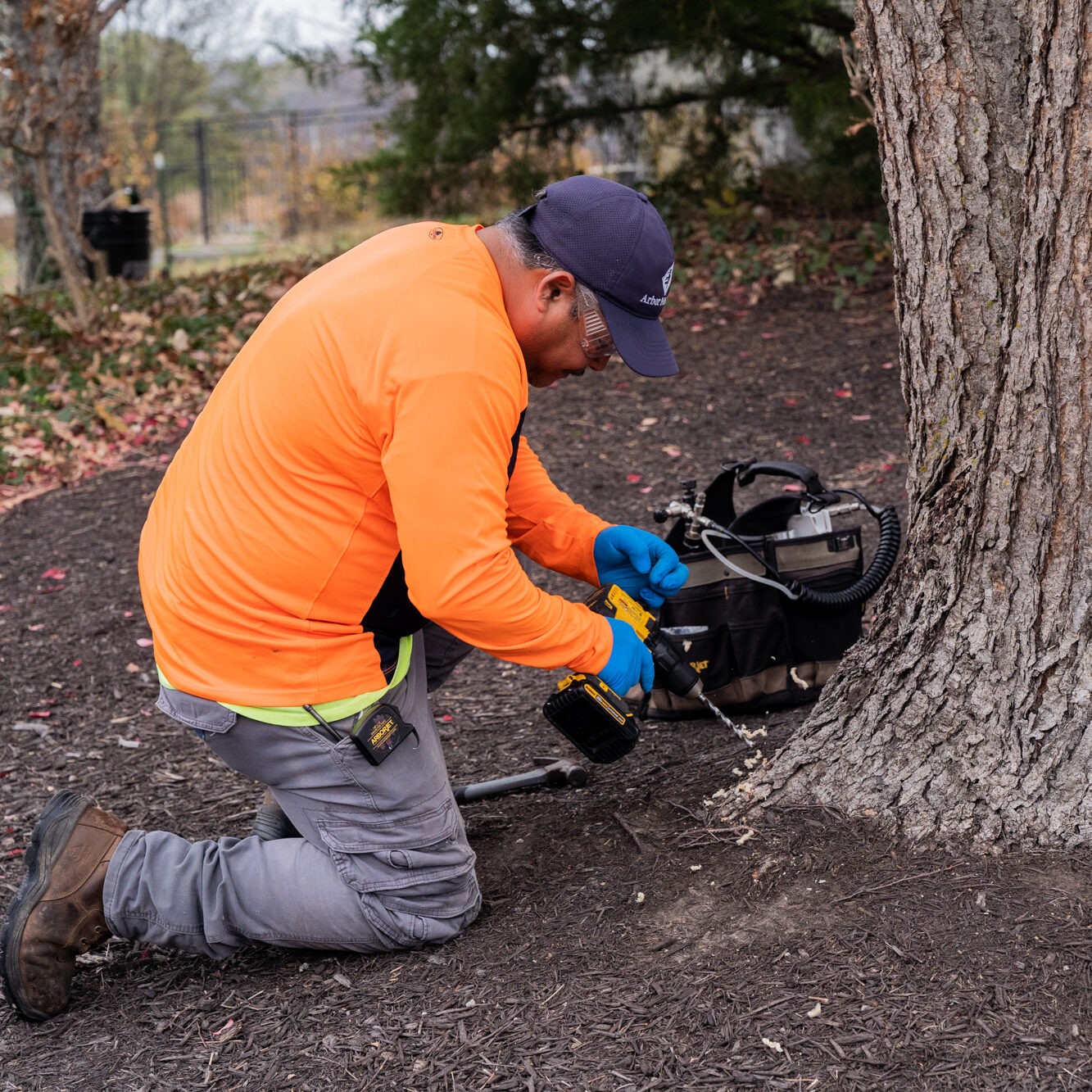What are webworms?
Webworms are caterpillars that spin silky webs in the branches of trees. They begin their life as larvae, later growing into webworms; they later encapsulate themselves into cocoons from which they emerge as moths.
Webworms are commonly found on many tree species across North America including the central states of Texas, Oklahoma, Kansas, Missouri and Iowa. The most common tree species affected by webworms are apple, birch, elm, hickory, locust, mulberry, oak, poplar, sycamore, walnut and willow trees. These trees tend to have thinner leaves which are preferred by the caterpillars.
What do webworms look like?
Webworm caterpillars grow to about 1 inch long, with black or reddish heads. They are covered with protective long whitish tufts of hair. Their bodies are pale yellow or greenish and marked with a broad mottled stripe, and two rows of black bumps down the back with yellowish patterns on the sides. Adult moths have dark spots on mostly white wings. The webs stretch around the ends of branches, enclosing leaves for food and are easily seen, looking like thin, fitted sheets of silk.
Are webworms and bagworms the same?
Bagworms and webworms are different species. Webworms build webs around branches of trees, while bagworms create bags from the foliage they eat, camouflaging their bags to be nearly invisible on some trees until they size up and turn brown.
These webs can be 12” or more in length, seen hanging from tree branch tips, while bagworms are singly concealed in bags averaging 1” long, which are often difficult to spot. If you suspect an infestation of either webworms or bagworms, it’s best to consult an Arbor Masters professional for advice on how to help protect your trees.
Do birds eat webworms?
According to the Missouri Department of Conservation, many different types of birds, spiders, flies, and wasps and ants are natural predators for webworms. The birds are attracted to the webs around branches of trees where they will hunt for and consume the caterpillars. By allowing these natural predators into your yard, you can help keep the webworm population under control.
Webworm Lifecycle and Spread
Webworms spend the winter in the leaf litter, emerging in late spring and early summer. Female moths lay eggs on leaves or tree bark. After the eggs hatch, the larvae crawl to the branches and begin constructing webs around them. Larvae feed on leaves and needles caught in those webs for several weeks, before pupating and emerging as adult moths to start the cycle over again.
The moths then lay eggs which hatch into larvae. The larvae will crawl down the tree, building webs and feeding on the leaves and needles. This cycle of webworm infestation can be repeated multiple times a season if not managed properly.
How do webworms spread?
Webworms typically spread by wind, which can carry the eggs and larvae from nearby trees to other areas. Additionally, they can also be introduced through bird migration or transportation of firewood from one area to another.
Damage
What damage do webworms do?
Webworms can cause significant damage to your trees. As they eat, a large infestation of webworms can defoliate entire branches, weakening the tree and making it vulnerable to further insect infestation and disease. Additionally, their webs block light from reaching the leaves, reducing photosynthesis and impacting new growth.
What does webworm damage look like?
Webworm damage is easy to spot. The webs will be clearly visible around the branches and the leaves within them may appear scorched or chewed. Additionally, a tree suffering from webworm infestation may have bare patches on its branches where all of its foliage has been eaten away. In central states like Kansas and Missouri, webworms are a common pest each year, causing damage to trees throughout the region.
Do webworms kill trees?
While webworm infestations do not directly kill trees, they can cause significant damage to the tree. This includes defoliating branches and blocking light from reaching the leaves. This damage weakens the tree’s overall health; subsequently, it makes it vulnerable to other insect infestations or diseases that may ultimately lead to tree death.
Treatment and Prevention
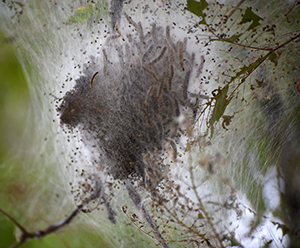
How to get rid of webworms?
If you have noticed the presence of webworms on your trees, it is important to act quickly. Contact your local arborist for an evaluation.
How to manage webworms?
The best way to manage webworms is through prevention, by promoting overall health and vigor. Our certified arborists are experts in providing comprehensive plant health care. We can develop a plan for you to deter pests like webworms from developing an infestation in the first place. The Arbor Masters team is here to help solve your webworm infestation.
Webworms are a manageable pest. With Arbor Masters’s comprehensive plant health care plan, we will keep your trees healthy and safe from pests. See what we can do for your yard by getting a quote today.

